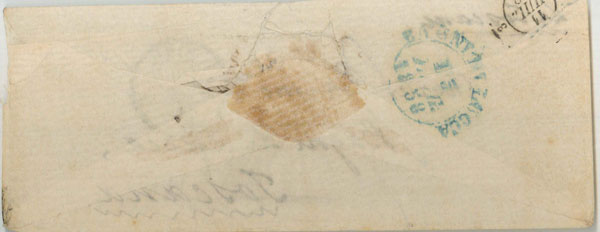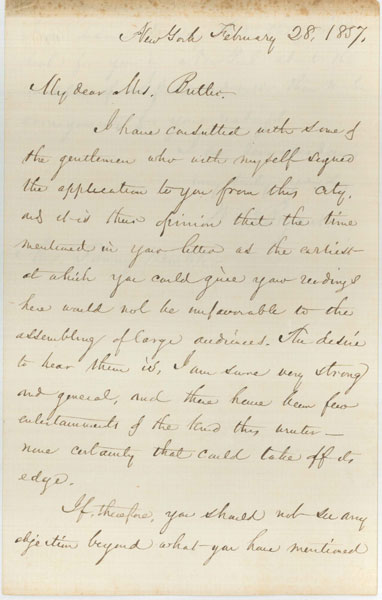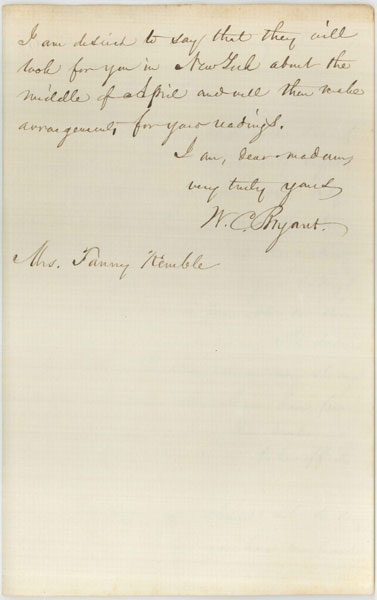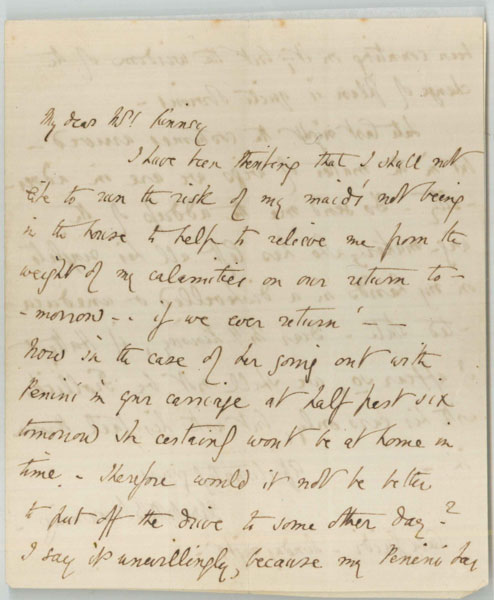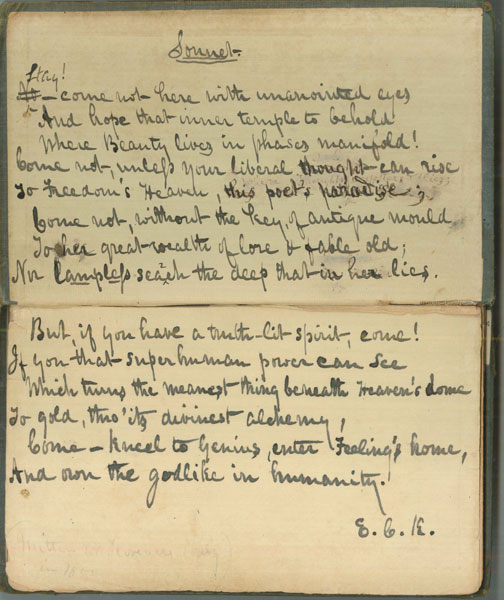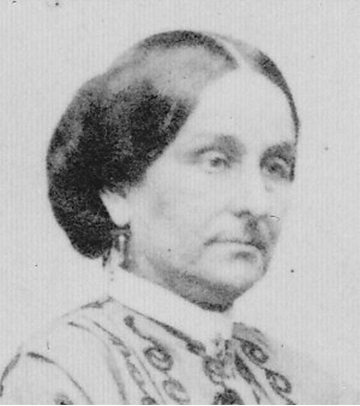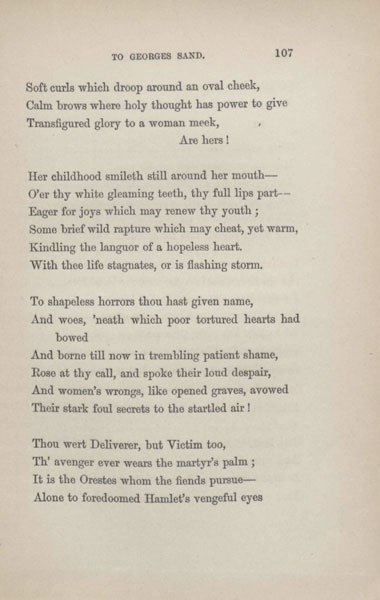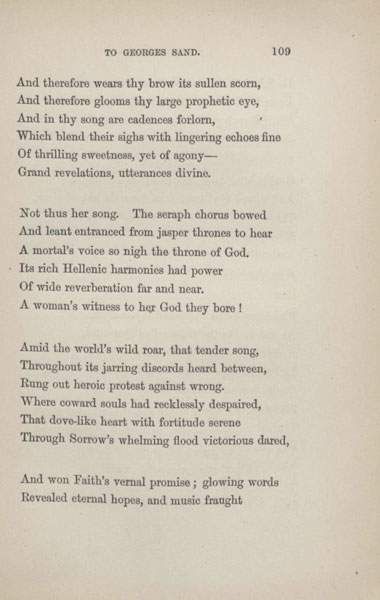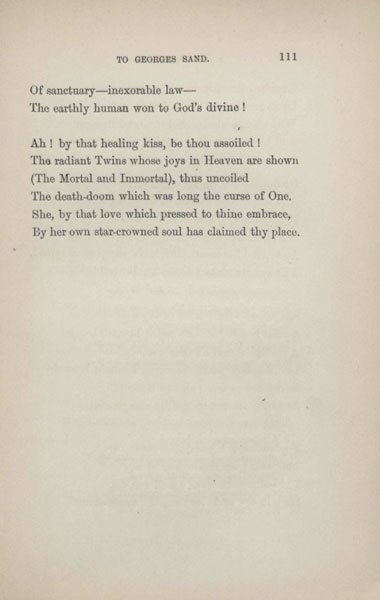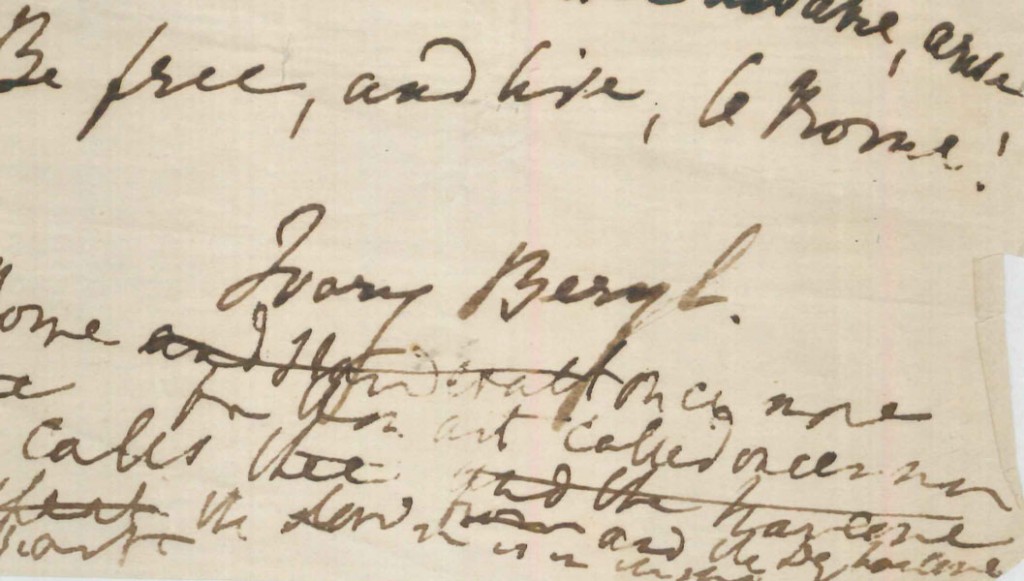Courtesy of The Armstrong Browning Library
By Melinda Creech, Graduate Assistant, Armstrong Browning Library
William Cullen Bryant, who was an American poet, journalist, and editor of the New York Evening Post, is best known for his poems “Thanatopsis” and “To a Waterfowl.”
Although he is mentioned in several of the Brownings’ letters, we have no record that he was a correspondent of the Brownings. The Brownings entertained Bryant at Casa Guidi in June 1858 and Bryant stayed in a hotel next door to the Brownings on a trip to Paris in July 1858.
The Armstrong Browning Library owns one letter from Bryant to Fanny Kemble and an autograph note in the Whittier Autograph Album. The ABL collection includes ten books, one of which, The Complete Poetical Works of William Cullen Bryant (1854), is a copy of the book that was given to Elizabeth Barrett Browning by Anna Ticknor.
William Cullen Bryant. The Complete Poetical Works of William Cullen Bryant. London: Knight and Son, 1854.
Anna Ticknor was an American author and educator who founded the Society to Encourage Studies at Home, which was the first correspondence school in the United States.
 In a letter from July of 1858, Browning thanks his friend, Charles Perkins, art critic, author, organizer of cultural activities, for the music they enjoyed in Florence. He also describes their trip by boat from Florence to France.
In a letter from July of 1858, Browning thanks his friend, Charles Perkins, art critic, author, organizer of cultural activities, for the music they enjoyed in Florence. He also describes their trip by boat from Florence to France.
… the ship was overcrowded from Leghorn to Genoa and my wife passed the night on the bare deck and a shawl or two rather than try the stifling berths below—thence to Marseilles was a rougher business—but we rested a night got to Lyons next evening, Dijon the following midday and Paris on Tuesday night.
He continues the letter, noting that in Paris William Cullen Bryant is his next door neighbor.
Mr Bryant happens to lodge in the Hôtel next door—which is pleasant to know–
 Browning also discusses future plans which include a proposed trip to Egypt, which never occurred.
Browning also discusses future plans which include a proposed trip to Egypt, which never occurred.
… we shall certainly set our faces Southward in less than three months, and, I suppose, find you at Florence,—at least provisionally. For us, if we don’t go to Egypt, we shall winter at Rome—or so we say at present.
Letter from Robert Browning to Charles Perkins.
11 July 1858.Letter from William Cullen Bryant to Miss Fanny Kemble [Mrs. Pierce Mease Butler]. 28 February 1857.
Bryant makes arrangements for Miss Kemble to give her readings in New York in April. He looks forward to her coming, commenting that
…there have been few entertainments of the kind this winter—none certainly that could take off its edge.



